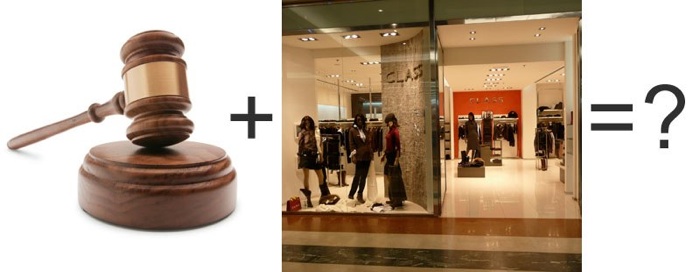Japan have been struggling for some time with poor aggregate demand in their economy. The interest rate has been near zero (and actually zero at some points) for a very long time to try and stimulate borrowing and investment.
I saw an interesting programme on NHK World (Japanese news channel) a few weeks ago. It was about consumption and consumer attitudes in Japan. Lots of things both surprised and intrigued me, such as the fact that the youth of Japan don’t spend very much and save a lot (they have a low marginal propensity to consume) – an alien concept in the UK, at least for the most part.
To combat this, industry in Japan has had to become innovative and think a little differently. One of their novel ideas to encourage consumption caught my eye in particular. A clothes shop had a pricing and selling structure that was very similar to a Dutch auction. Before I describe the way the shop worked in more detail, I’ll briefly explain what a Dutch auction is.
Dutch Auctions
Most people are familiar with standard ascending price auctions. The auctioneer starts at a price which is usually less than or equal to the product’s value. Bidders then continue to bid increasingly higher amounts until one bidder makes a bid that nobody else is willing to match. That person then ‘wins’ the good, and pays the price that they bid. This type of auction is also known as an English auction.
Dutch auctions (or descending price auctions) are kind of the opposite of English auctions. The term came from the way Dutch flower auctions were conducted. The auctioneer will start at a price well above the value of the good. He will then incrementally lower the asking price. The first person to accept that price will pay that price for the good. (Dutch auctions can take various different forms, such has having more than one winner and more than one good on offer. However, I’m only concerned with the one good, one winner variant.)
In an English auction, each bidder will have a value for the good in their mind. They will (usually) stop bidding once the asking price has exceeded this valuation that they have. Therefore, it is quite possible for you to go to an English auction and pay less for something than what you think it is worth.
This won’t happen in a Dutch auction. Say you went to a Dutch auction and really wanted a particular bottle of wine, which you were prepared to pay up to £100 for. This bottle of wine is one of a kind and you are unlikely to find another bottle anywhere else. The price starts at £200 and goes down by £10 at a time. Nobody buys. The price reaches £100. What do you do?
If you waited, there is the risk that someone else will accept the £100 price and take the wine for a price that you were actually willing to pay. That’s why in a Dutch auction you would almost always buy the good at the maximum possible price that you were willing to pay for it.
The Shop
Back to the Japanese clothes shop then. Rather than having multiple items of the same piece of clothing, every item in the shop was unique (maybe similar to a shop that a fashion designer would have). There were 4 set prices for clothes. Let’s suppose that the prices were £40, £30, £20 and £10.
The way the pricing of clothes worked was as follows:
- The shop gets new items of clothing every week (any fixed time period would suffice)
- New items are priced at £40
- If a new item is not sold after a week, then it will reduce in price by £10
- If an item has been around for 4 weeks and has not been sold, then it is taken off sale
As you can see, this is very similar to the idea of a Dutch auction. Since the items are unique, there is an incentive for people to pay the highest price that they are willing to pay. This is due to the risk of the item being sold to someone else the next time they come into the shop.
This idea is quite exciting for 2 reasons. Firstly, it encourages people to buy now if they want something (which is what is needed in the Japanese economy). Secondly, it also acts an incentive for people to visit the shop more often to see if an item is still there. Obviously, whilst you’re there, you could end up walking away with something else you like too.
I think that this is a novel idea for a shop, and as an experiment, it would be interesting to see it done in the UK. It would give us a chance to compare and contrast behaviours between different cultures and demographics. Something to think about when you open your new shop…


